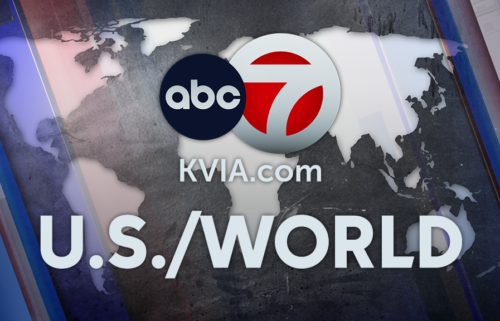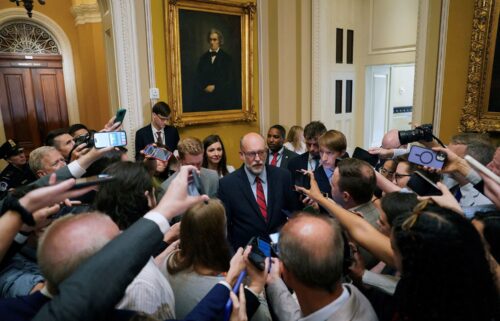Covid-19 has already exhausted the US. And it’s only the start of a dark and deadly winter

For weeks, experts have warned Americans in increasingly dire terms that this winter will be one of the darkest periods in the nation’s public health history.
Now that time is upon us.
From California to Kansas, Massachusetts to Florida, and everywhere in-between, doctors, nurses, funeral home directors and food bank organizers are bracing for a devastating season. They’re already stretched thin and exhausted after months of confronting the deadly Covid-19 pandemic, but they fear the worst is still yet to come.
“I think we’re past the breaking point,” said Dr. Adolphe Edward, CEO of El Centro Regional Medical Center in Southern California. “The staff is here, but they’re broken.”
Edward’s hospital on Thursday had just two beds left before its intensive care unit reaches capacity. A second field hospital with 50 beds has been built in part of their parking lot — a scene reminiscent of the Air Force veteran’s time in Baghdad.
“I might really be back in a war zone,” he said. “We’re at war against Covid.”
Hospitals like El Centro have already been pushed to the brink as hospitalizations climb nationwide. But with colder temperatures pushing people indoors and a weary public eager to mark the holiday season, health care workers could be overrun.
The numbers paint a bleak picture. On Thursday, the US had its highest day of new cases and deaths, with 217,664 and 2,879, respectively, according to Johns Hopkins University. And there were a record 100,667 hospitalizations, per the Covid Tracking Project.
And while vaccines are on the way, the US has a long road ahead before it can return to normal.
“The reality is, December and January and February are going to be rough times,” Dr. Robert Redfield, the director of the US Centers for Disease Control and Prevention, warned Wednesday. “I actually believe they’re going to be the most difficult in the public health history of this nation, largely because of the stress that’s going to put on our health care system.”
There’s a dire need for health care workers
Nurses at Montefiore New Rochelle Hospital in New Rochelle, New York — the East Coast’s first Covid-19 hotspot — took to the picket line this week, demanding better pay, more staffing and higher quality protective gear ahead of a potential surge in Covid-19 hospitalizations.
“Right now, we have less staff than we had in the spring … when Covid started,” nurse Kathy Santoiemma told CNN affiliate News12 Westchester. “So we’re not even worried — we’re terrified.”
The need for more staff is being felt in communities across the country. On Thursday, Massachusetts Health and Human Services Secretary Marylou Sudders announced plans to build a field hospital in Lowell, and she pleaded for people to step forward to staff the facility.
“If you have the skills, the can-do attitude and have time to work in a hospital, we need you,” she said. “Now is the time to step up and serve your neighbors, your community and your loved ones.”
Edward is also feeling the squeeze in El Centro. Despite the additional tent erected nearby, he’s not certain the facility can take on more patients without more staff. Those already working in the hospital are “severely exhausted,” he said, and some are falling ill.
He doesn’t expect the pandemic to let up any time soon, and he’s not sure how much longer his staff can keep going.
“The resiliency starts to break down at some point, regardless of how much I know that this team is willing to do,” he said.
Nurses at Hutchinson Regional Medical Center in Hutchinson, Kansas, are also dreading a potential surge in cases.
“Two to three weeks we’re going to be just swamped,” nurse Mary Jones told CNN affiliate KWCH. Jones, who works in the Covid-19 unit, told the station she’s lost more patients in the last couple months than she has in the last decade.
“There are days that you go home and you’re just not sure you’re going to come back, days you get here and find out someone you were taking care of two days ago is gone,” she said.
And yet, nurses are still dealing with patients who deny the virus is even real, she said. One patient told Jones that “masks don’t make any difference and Covid isn’t really a thing — it doesn’t exist.”
Funeral homes are inundated
That stress extends to all aspects of a community, including funeral homes like Frye Chapel & Mortuary in Blythe, California, along the state’s southeastern border with Arizona.
Sheila Kruger, the funeral home’s managing partner, told CNN her business has tripled. She’s booked with funerals for the next four or five weeks, with the coronavirus accounting for a growing share of deaths.
“We’ve had married couples that die within a day of each other, a husband and wife. We’ve had parents and children die within a week of each other. It’s heart wrenching,” she said.
Kruger’s staff was overwhelmed this summer, handling 135 deaths in one month compared to the average of 55. She’s since doubled her staff and purchased additional refrigerated units to store bodies. But now they’re filling up again.
Experts believe the death toll is going to climb exponentially. Last week, Dr. Jonathan Reiner of George Washington University School of Medicine, predicted the rate of deaths would likely double in less than two weeks to an average of 4,000 a day.
Kruger’s not alone. In Rockford, Illinois, Tim Honquest, director of the Honquest Family Funeral Homes, told CNN affiliate WREX that his business ran out of refrigerated space to store bodies last month.
His business nearly doubled in November alone — conducting 54 funerals compared to the usual 30. Twenty-six of the funerals last month were due to Covid-19.
While Kruger feels her staff can handle the boom in business, she believes some are suffering from post-traumatic stress, partly due to having to repeatedly inform grieving families they can’t have a funeral for five weeks.
“We’re all just kind of cringing and saying, ‘We do not want to do this again,'” she said.
The demand for food is through the roof
The needs aren’t limited to medical staff. Many families are just trying to make ends meet.
Karen Sosa waited in line at a Los Angeles food bank this week for the first time. She’s been out of work for just two weeks, but her family has four children to feed, so they’re taking advantage of the resources available.
“We don’t know when we’re going to have income, so that means we don’t know when we’re going to be able to buy groceries,” she said. “This is a good lifesaver. We don’t know when we’ll have money, but we’ll at least have food.”
Sosa isn’t alone. There are lines across the country, including in Miami, where Paco Vélez, President and CEO of Feeding South Florida, said more than a thousand families lined up at a food distribution event on Thursday, to pick up boxes filled with milk, pre-cooked chicken and a variety of fresh fruits and vegetables.
But those boxes are funded in part by the US Department of Agriculture’s Coronavirus Food Assistance program — and that help ends this week.
“These food boxes run out at the end of this week … and then the rest of December we’re going to have to figure out how we’re going to bring in food to make sure that these families have enough food for the rest of the month,” Vélez said.
Los Angeles Regional Food Bank President and CEO Michael Flood says his organization’s food distribution is up 145% — unprecedented demand. Every day, he sees families worried about keeping a roof over their heads and where they’ll get their next meal. And many of those seeking help are doing so for the first time, like Sosa.
“We don’t really know when this is going to end,” he said.




